Today, we have a quick one, the Netgear GS116 review. Technically, this one was labeled as the GS116v2, and with the various changes in hardware, as we have seen with the Netgear GS305P v2 sometimes things are a bit different. Still, this review is happening because Patrick sent me a note “have you reviewed this?” when he was using one of these on set. This class of 16-port switches is good to have in the lab or at a desk to just quickly plug things in and it just so happened I had one that I mounted under a desk a few weeks ago. So two switches, plus photos mean we have a review.
Netgear ProSafe GS116 16-port Switch Hardware Overview
The Netgear ProSafe GS116 (GS116v2) is a 16-port gigabit switch. That means the front of the unit is a wall of Gigabit Ethernet ports. It is also very small. You can see camera lenses in the back of this picture, but the entire device is listed at 1.06″ x 11.22″ x 4.06″. Mounting is a big deal in this segment so you get rubber feet as well as some screws. Another option is you can just use a large Velcro patch and attach the switch to a desk or just about anywhere.
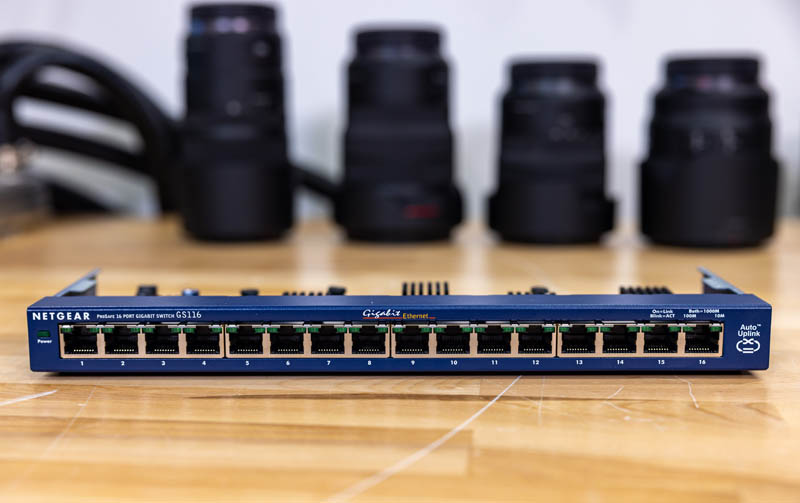
The rear of the switch has vents and a Kensington lock port. It also has the 12V 1.0A power input.
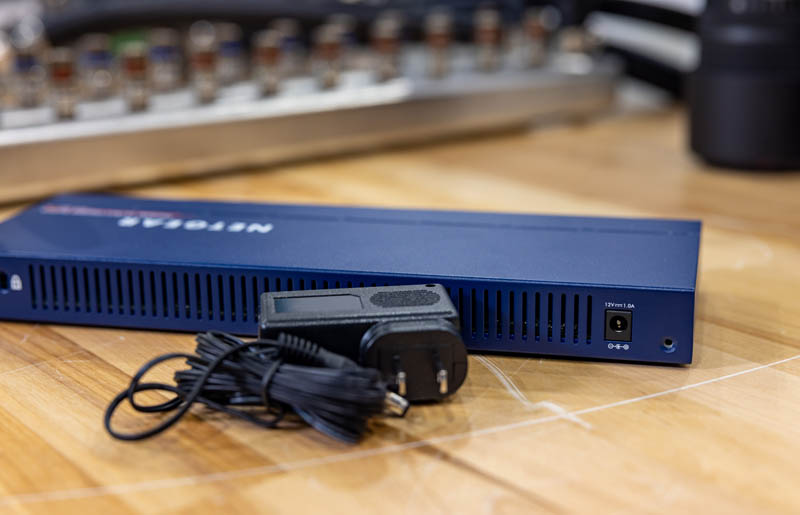
Since this is such a low-power device, it is passively cooled. That means it is silent in operation.
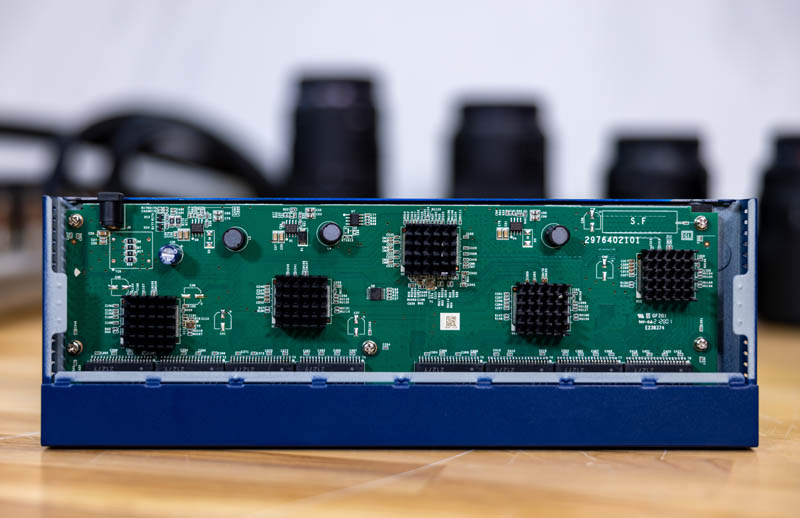
The basic switch is heavily optimized for cost, but it does have a metal chassis while some in this segment have a plastic chassis.
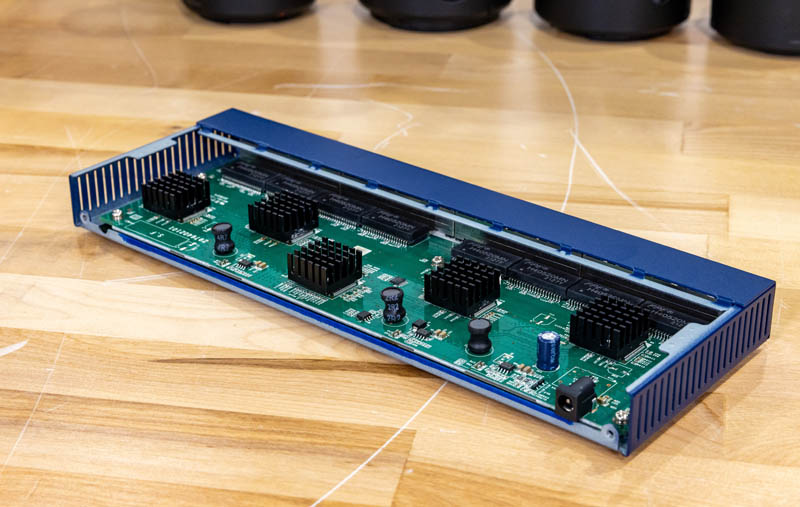
If it is not clear by the photos, this is an unmanaged switch. For those that want to set VLANs on the switch, have QoS, or other features commonly found on even smart switches, you cannot do that here. The impact is that we also do not have management processors with DRAM packages in the switch that add to cost.
Netgear GS116 16-port Switch Performance and Power Consumption
In terms of performance, we were able to pass traffic port-to-port without issue at wire speed. 1GbE speeds are not exciting these days though. We often use these for Raspberry Pi, Project TinyMiniMicro, or other lower-power nodes. We also use them for management interfaces. I have one under my garage workbench just in case I need it. The unit Patrick and team photographed was being used for a VERY high-end demonstration (Editor’s note: Preview on Twitter), but just to provide management networking.
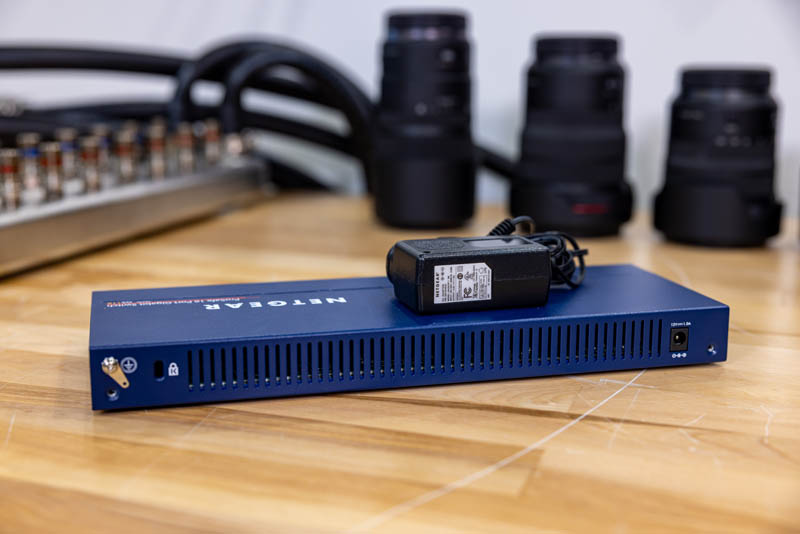
In terms of power consumption, my unit uses <2W of idle power and I have not seen it crest 10W. The 12V 1A input suggests that is a reasonable range. The advantage of being unmanaged is that we also get lower power consumption.
Cost and Saving Big Money
These can generally be found for $100-120 USD street price. When doing a quick look at the Netgear pages for these, I noticed that Netgear has what looks like an older GS116 (maybe V1) shown. You can clearly see larger gaps between the sets of four ports. However, these units also come with a lifetime warranty. I think many of us have cheap 4, 5, 8, and 16 port switches that we have forgotten over the years because they are so reliable. That reliability means the lifetime warranty is inexpensive to offer.
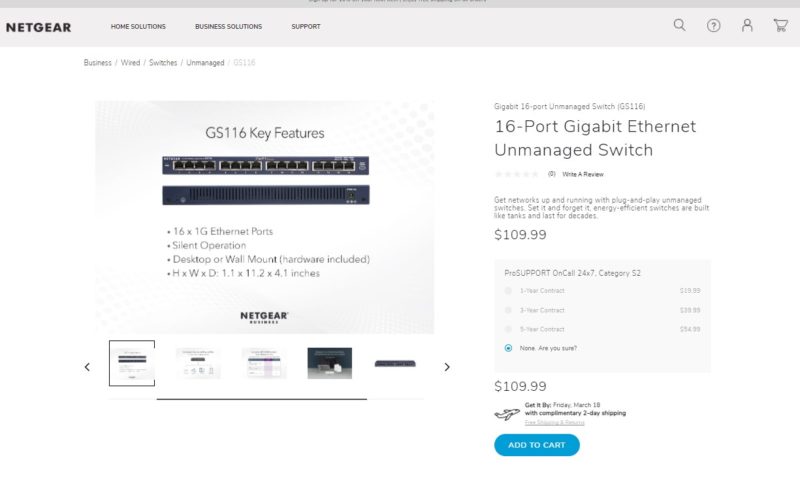
The tip I will give you is that you can see that there is ProSUPPORT OnCall 24×7 listed. Prices range from $20 for a year to $55 for five years. Let me save you some money. This is an unmanaged switch with a lifetime warranty and high reliability. Without anything to configure, this is just power and go, there is very little reason to spend that $55. You are better off just buying a new one if the need ever arises. There is basically nothing support can do with these unmanaged switches other than to just send you a new one, and that is a warranty task.
Our advice is to just save your money and do not get ProSUPPORT. If you are not a regular reader, and someone is trying to sell you ProSUPPORT on this, or other Netgear unmanaged switches, we would say save your money. Of course, ProSUPPORT can be useful, but it is hard to understand the value proposition on an unmanaged switch, especially when the 5-year price is about half the new cost of the switch.
Final Words
Overall, this is really not meant to be the fanciest switch. At the same time, sometimes you just have a bunch of devices you need to connect. Many running things like Raspberry Pi or Project TinyMiniMicro clusters will certainly attest to that need. This is a great solution for those types of environments where you are not looking for a higher-end managed switch but just need something that mounts anywhere, you can plug devices into, and that sips power. That is the segment where this is a useful product. Even those of us that do networking regularly often have these low-cost devices around for that reason.

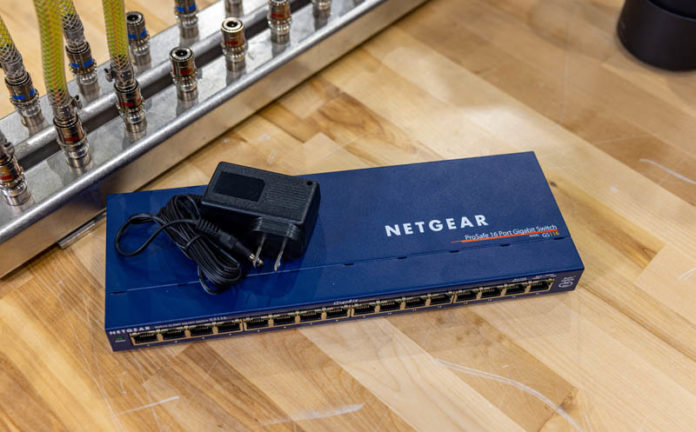



I wonder what is the switching latency and how it compares to other offerings. Such information is often difficult to come by.
How does this compare to something like the Mikrotik CSS326 or CRS326? They aren’t that far off in price and have some manageability. Their real killer features though are the 2x 10Gb SFP+ ports and the POE-in.
I have the CSS both as a 10G pass-through for my workstation and offering an additional 23 ports that I can assign to different VLANs (23, as one is POE and a separate backup uplink). Dead silent and power sipping but with some real power-user features for the intrepid home-labber.
Netgear also has a GS116Ev2 that’s a little bit smarter (VLANs) than the GS116v2. I have one at home. Last time I checked, prices for these two switches were so close that I can’t see any good reason to choose the GS116v2 “non-E” over its slightly more capable sibling.
To Nikolay M.: actually Netgear’s datasheet does list latency (< 1.6 µs @ 64B), but this is a store-and-forward switch (all entry-level switches are…), so do not expect any miracle there: regular-sized frames will have a much higher latency.
The downside of the ‘somewhat smart’ switches is that they also introduce a lot of room for weird bugs. A lot of the Realtek-based smart managed switched for example boot with in near hub-mode or “all VLANs are connected to each other” switch mode before reconfiguring themselves. Others had bugs where you have VLAN1 that you can’t un-assign so all devices can always access VLAN1. And then there are the QinQ bugs where sometimes it only uses the inner Q-tag is ingress and the inner Q-tag as egress filter, so depending on in what direction you want to hop you can abuse that to do VLAN-hopping (and when a flow is established frames are forwarded in both directions).
So while ‘almost the same price’ somewhat-managed switches can be useful, the low-end stuff can also be so buggy that you might wonder if a fanless used HPE 1GbE switch (even the web-managed nonsense) might be a better choice.
I hab a laugh about this one.
As I own multiple, at least for 15 years now.
The size is small and the heat output is negelable. Had it placed in all kings of small environments (cupboard,drawers,10″rack). For places where you need more the. 5/8 ports and need slim profile.
To bad the caps get worn, but lifetime warranty is just the biggest plus of these Netgear switches.
Why are we still talking 1Gbps? How about 2.5, 5, 10Gbps switched?
The pictures of the internals are interesting. It looks like it might be 5 individual switch chips on a single board. Maybe 5 5-port 1gbps chips with 4 of them each handling 4 ports and then those connected to an internal only switch. That design would limit the performance when having multiple devices on one port group trying to communicate with multiple devices in another port group at line rate. It’d be interesting to test 2 devices on say ports 1 and 2 trying to communicate with 2 devices on say ports 15 and 16. Would that overall traffic be limited to 1Gbps due to the links to that internal switch?
@Mike: for the record, the GS116Ev2 “with-an-E” (well, mine at least, bought in 2014) is three chips only. Possibly slightly better (2 groups of 8 ports instead of 4 groups of 4 ports?), but still likely not a non-blocking architecture. Not that Netgear pretends they are. Once again both GS116v2 and GS116Ev2 are cheap, entry-level switches: no miracle.
I do agree this would have been interesting to see tested, though.
The GS series is a mainstay. The first models were introduced in 2003 or 2004 — the line is almost 20 years old now. The FS series in the same blue steel box goes back to the 90s. I’m never surprised to find one of these still operating after 10 or 15 years, forgotten in a closet or under a desk. And I never hesitate to grab one when a client needs a few more ports. There is absolutely a place for simple 1G dumb switches. Not enough is said about simple, reliable devices that just do their jobs, especially in an industry that tends to abandon or ruin great products drowned by cheap knock-offs. Sometimes, not having much to say is a feature, not a bug.